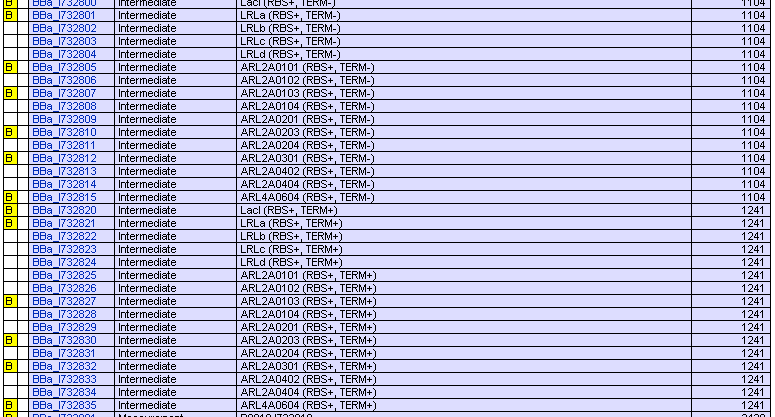USTC/Further More
From 2007.igem.org
Contents |
Further Optimization
Though the existing bio-logic gates and wires are able to form a practicable combinational logic circuit in a bacterial cell, there remain some bottlenecks limiting the capability of our method.
- Size of the Wires
The size of wires are much larger than the gates in our system. We think it should be reduced. Some ligands, for example, peptides, saccharides, lipid and so on, may be able used as signal carrier.
- More Input Signals
More signals with high quality are needed in larger-scale bio-logic circuit as inputs. We think computational protein-ligand design can play a important role to provide more highly-specific protein-ligand pairs.
- Response Time
At present, the response time of our bio-logic gates is much longer than electronic ones. This situation should be proved.
- I/O Standardization
Strength of the input and output signals for different gates should be adjusted to the same level. There are several proposals as following.
Conductance Adjusting
As we mentioned above, the noninterference Repressor/Operator pairs can play good roles as “wires”. Of course, different pairs have different strength of bond, so these wires will transfer different intensity of signals from upstream components to downstream ones, even though conducting the same two components. In qualitative or semiquantitative experiments, this will not be a serious problem, but we must solve it for experiments that are more precise.
We all know that different promoters can initialize transcription strongly or weakly ([http://partsregistry.org/Part:BBa_J23100 Parts:BBa_J23100 and its family]). On the other hand, various RBS may lead to various efficiency of translation ([http://partsregistry.org/Part:BBa_J61100 Parts:BBa_J61100 and its family] and [http://partsregistry.org/JCA_Arkin_RBSFamilyPart2 JCA_Arkin_RBS Family]). Naturally, we will think of these two approaches: using different promoters or using different RBS. However, according to the idea of “modularization”, we don’t want to modify promoters casually because these promoters are the kernel elements of our logic components. Anyway, we can modify the other elements around this kernel, i.e. the RBS and operators. Let’s imagine the wires--every wire has two ends, and each of our Repressor/Operator pairs is a monodirectional wire. The beginning end is the RBS that activates the translation of this repressor protein, and the tail end is the operator that accesses the repression of this protein.
To modify the RBS or operators is just like changing the conductance of actual wires’ ends, so we call it “Conductance Adjusting”:
Using different RBS
Registry of Standard Biological Parts have provided many kinds of RBS whose activities distributes within a wide range ([http://partsregistry.org/Part:BBa_J61100 Parts:BBa_J61100 and its family] and [http://partsregistry.org/JCA_Arkin_RBSFamilyPart2 JCA_Arkin_RBS Family]). We’ve submitted our repressor protein coding parts without RBS or terminator, so anyone can assemble them with appropriate RBS to get applicable efficiency of translation.
Of course, we also submitted those protein coding parts with RBS B0034 and terminator B0015 assembled. If you care nothing for the differences between differenet RBS, well then they are good enough.
Using different Operators
TODO by Ma Rui

